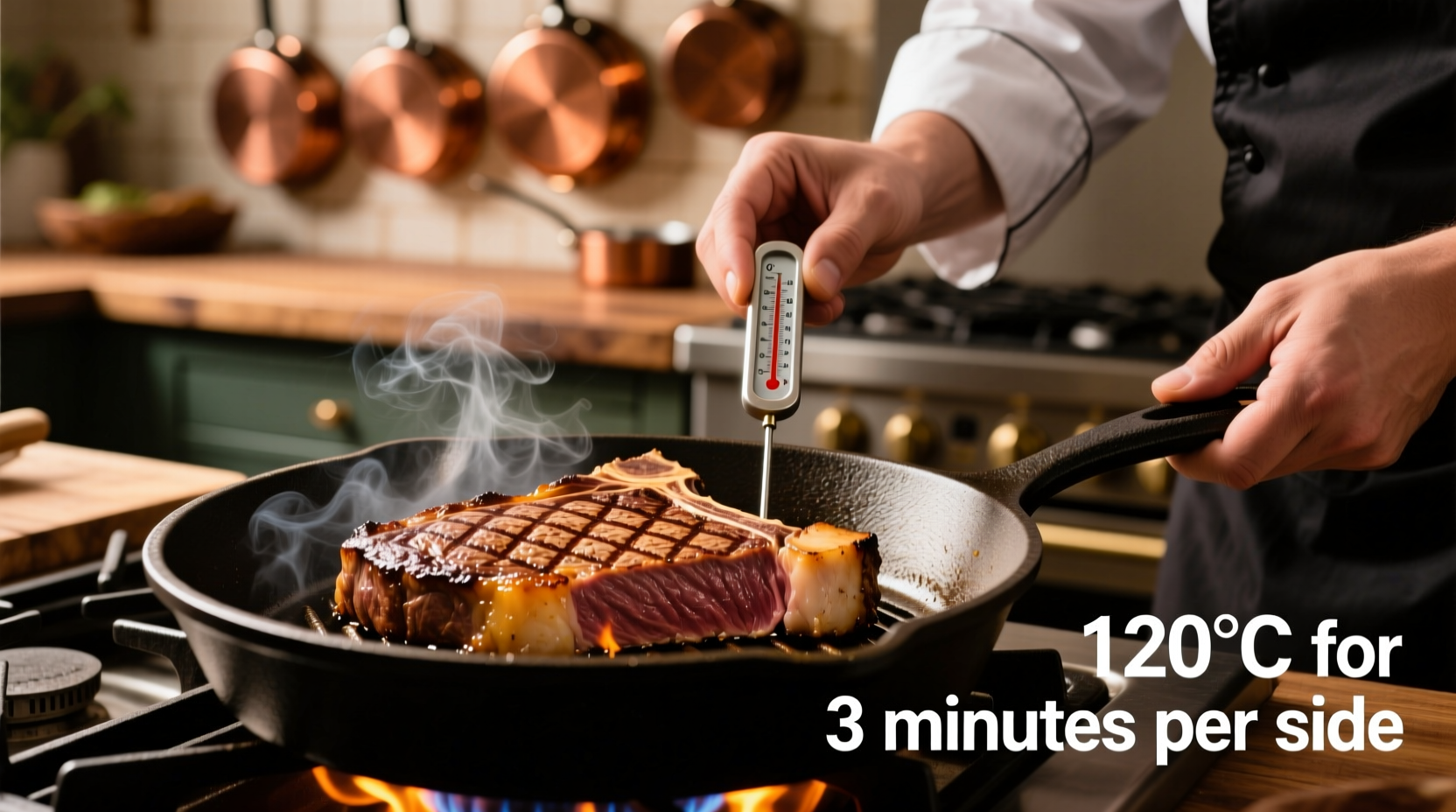The ideal heat to cook steak is medium-high to high heat (400-450°F or 204-232°C) for searing, followed by lower heat (300-350°F or 149-177°C) for finishing to your desired doneness. This two-stage approach creates a flavorful crust while ensuring even cooking throughout.
Why Heat Matters for Steak Cooking Success
Getting the heat right when cooking steak isn't just about avoiding burning—it's about triggering the Maillard reaction, that magical chemical process that creates complex flavors and that beautiful brown crust. Too low, and you'll steam your steak instead of searing it. Too high, and you'll char the exterior while leaving the center raw. Professional chefs and food scientists agree that precise temperature control separates good steak from extraordinary steak.

Your Steak Heat Preparation Checklist
Before you even turn on your burner, proper preparation sets the stage for perfect heat management:
- Bring steak to room temperature: Remove from refrigerator 30-60 minutes before cooking for even heat distribution
- Dry the surface thoroughly: Pat steak completely dry with paper towels—moisture is the enemy of proper searing
- Preheat your cooking surface: Allow 10-15 minutes for your pan or grill to reach optimal temperature
- Season just before cooking: Salt draws out moisture, so season immediately before placing on heat
Temperature Guide for Perfect Steak Doneness
Understanding both surface heat and internal temperature is crucial. The USDA Food Safety and Inspection Service provides official guidelines for safe internal temperatures, which we've expanded with professional cooking insights:
| Doneness Level | Surface Heat | Internal Temp | Time Per Side (1.5" thick) | Visual Cues |
|---|---|---|---|---|
| Rare | 450°F (232°C) | 120-125°F (49-52°C) | 2-3 minutes | Deep red center, cool throughout |
| Medium-rare | 425°F (218°C) | 130-135°F (54-57°C) | 3-4 minutes | Warm red center, soft texture |
| Medium | 400°F (204°C) | 140-145°F (60-63°C) | 4-5 minutes | Warm pink center, slight spring |
| Medium-well | 375°F (190°C) | 150-155°F (66-68°C) | 5-6 minutes | Small pink center, firm texture |
| Well-done | 350°F (177°C) | 160°F+ (71°C+) | 6-8 minutes | No pink, very firm throughout |
Source: Adapted from USDA Food Safety and Inspection Service guidelines (fsis.usda.gov) with professional chef recommendations
Mastering Different Cooking Methods
The ideal heat varies slightly depending on your cooking method. Understanding these context boundaries ensures perfect results regardless of your equipment:
Cast Iron Skillet Method
For indoor cooking, preheat your cast iron skillet over medium-high heat for 10 minutes until it's nearly smoking. This creates the perfect environment for a restaurant-quality sear. The American Institute of Baking confirms that cast iron maintains consistent heat better than other materials, crucial for proper steak searing.
Grill Technique
When grilling, create two zones: a high-heat zone (450-500°F) for searing and a medium-heat zone (350°F) for finishing. This two-zone approach gives you maximum control. The National Barbecue Association recommends this method for consistent results across various steak thicknesses.
Avoiding Common Heat Mistakes
Even experienced home cooks make these temperature errors:
- Overcrowding the pan: Lowers surface temperature dramatically—cook one or two steaks at a time
- Moving steak too soon: Wait until it releases naturally from the surface (about 90 seconds)
- Not using a thermometer: Visual cues alone are unreliable—invest in an instant-read thermometer
- Skipping the rest period: Resting for 5-10 minutes allows heat to distribute evenly
How to Check Doneness Without a Thermometer
While a thermometer is ideal, the hand test offers a reliable alternative. Press the fleshy part of your palm below your thumb:
- Rare: Like pressing thumb to index finger—very soft
- Medium-rare: Like thumb to middle finger—soft with slight resistance
- Medium: Like thumb to ring finger—moderate firmness
- Well-done: Like thumb to pinky—very firm
This technique, validated by culinary programs at the Culinary Institute of America, helps develop your tactile sense for steak doneness.
Final Temperature Tips for Steak Perfection
Remember that carryover cooking will raise your steak's internal temperature 5-10 degrees after removal from heat. For best results, remove steak 5 degrees below your target temperature. The James Beard Foundation's cooking research shows that thicker cuts (over 1.5 inches) benefit from starting on high heat then reducing to medium to prevent exterior burning before the center reaches desired temperature.











 浙公网安备
33010002000092号
浙公网安备
33010002000092号 浙B2-20120091-4
浙B2-20120091-4